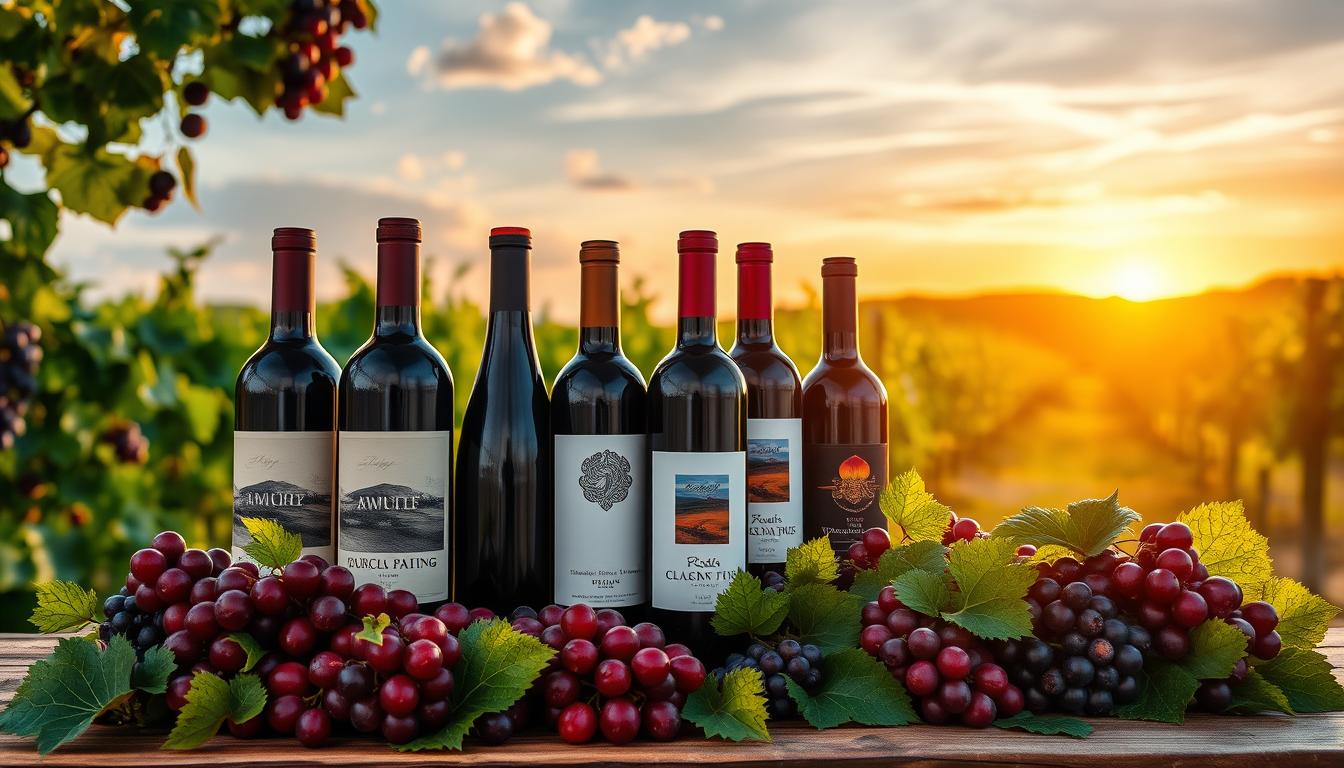Imagine gathering around a dinner table, laughter and chatter harmonizing with the clink of glasses, as you and your friends savor a carefully chosen bottle of red wine. The vibrant hues swirling in your glass evoke a sense of anticipation, transporting you to vineyards where the sun kisses the grapes. Red wines have a unique way of enhancing our moments, turning ordinary evenings into cherished memories. Whether you’re a newcomer to the world of wine or a seasoned enthusiast, understanding the best red wines and their varietals is crucial to elevate your experience. With just a little guidance, you can discover a wine that resonates with your palate, pairs beautifully with your meals, and adds that perfect touch to any gathering.
In this guide, we’ll explore the diverse realm of red wine varietals, providing you with thoughtful tips for selecting the right wine for each occasion, while sharing our top recommendations suited for both beginners and aficionados. Get ready to deepen your appreciation for red wine pairing, as we embark on a flavorful journey together.
Key Takeaways
- Red wines offer a diverse range of flavors and characteristics.
- Understanding wine varietals enhances your wine selection experience.
- Choosing smooth red wines can make it easier for beginners.
- Pairing wines with food elevates the dining experience.
- Price points for red wines can vary significantly, catering to every budget.
- Personal taste is key in finding your favorite red wine.
Introduction to Red Wines
Red wines offer a captivating exploration into the world of viniculture, characterized by their deep hues and rich flavors. Understanding red wines encompasses various aspects of wine basics, which create a robust foundation for your wine education journey. Made from dark-colored grape varieties, these wines encompass a broad spectrum of flavors stemming from grapes, terroir, and production techniques.
The diversity of red wines is astounding. Among the popular grape varieties are Cabernet Sauvignon, known for its pivotal role in Bordeaux and Napa Valley, along with Merlot, often regarded as the ‘Chardonnay of reds.’ Pinot Noir, while more expensive, frequently earns admiration for its elegance. Other notable varieties include Syrah, Zinfandel, and Malbec, whose jammy notes and chocolate accents attract attention.
Factors influencing the taste of red wines include the varietals selected, where each grape contributes distinctive flavors. For instance, Cabernet Franc showcases earthy characertistics, while Gamay bursts with berry flavors. Understanding how these elements work together enhances your appreciation for wine.
Regions around the globe play a crucial role in crafting red wines. Bordeaux and Burgundy in France, Tuscany in Italy, and the sunny landscapes of California and Argentina serve as prime examples. Each area introduces unique climatic and soil conditions impacting the grapes grown, producing wines reflective of their origins.
Part of enjoying red wines lies in pairing them with food. Classic combinations like Merlot with chocolate desserts or Cabernet Sauvignon with rich meats enhance culinary experiences, making red wines a staple in celebrations and dinner tables alike.
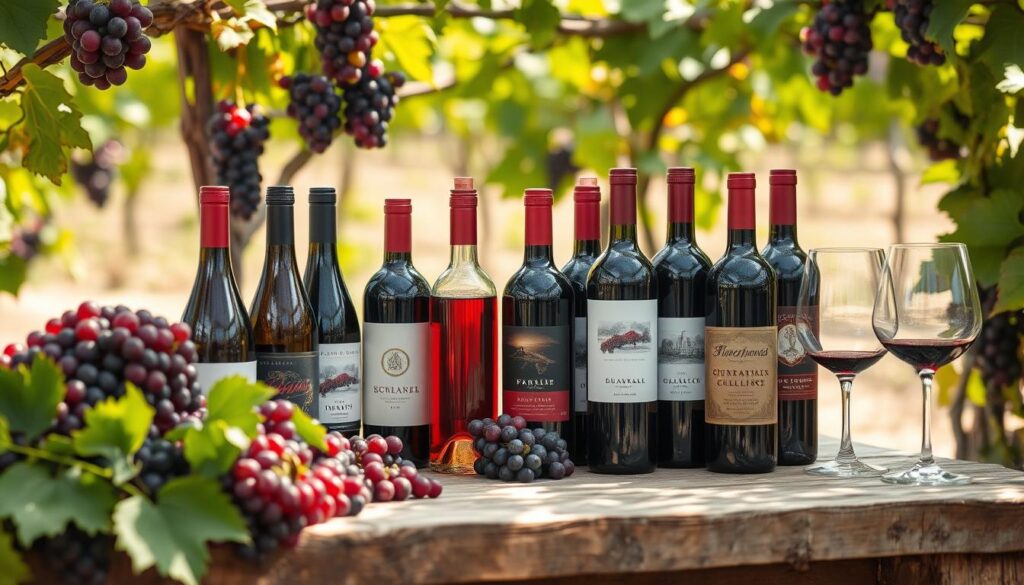
| Red Wine Varietals | Flavor Profiles | Food Pairings |
|---|---|---|
| Cabernet Sauvignon | Blackcurrant, Bell Pepper, Cedar | Grilled steak, Aged cheese |
| Merlot | Cherry, Chocolate, Plum | Roasted chicken, Pasta |
| Pinot Noir | Strawberry, Raspberry, Earth | Duck, Mushroom risotto |
| Malbec | Blackberry, Plum, Cocoa | Barbecue ribs, Sausage |
| Syrah/Shiraz | Blueberry, Black Pepper, Spice | Grilled meats, Lamb |
Understanding Red Wine Varietals
Exploring red wine varietals expands your appreciation of this beloved beverage. Each varietal offers unique flavor profiles and characteristics, making it essential to understand the popular red wines available. From the boldness of Cabernet Sauvignon to the elegance of Pinot Noir, knowing the distinct traits of these wines can enhance your wine enjoyment.
Popular Red Wine Varietals
- Cabernet Sauvignon: Known for its rich flavors and aging potential, this varietal displays notes of bell pepper, green olive, and black cherry.
- Merlot: Often described as the “Chardonnay of reds,” Merlot features spice and cherry flavors and is a primary component of Bordeaux blends.
- Pinot Noir: This varietal showcases delicate flavors of cherry, blackberry, and even tomato leaf, making it a versatile option for many dishes.
- Gamay: Predominantly grown in the Beaujolais region, Gamay reveals vibrant notes of strawberry and raspberry.
- Malbec: Grown mainly in Argentina, Malbec is recognized for its sour cherry and spicy flavors.
- Syrah/Shiraz: This varietal offers rich flavors, including raspberry and blackberry, and is known for its boldness.
Characteristics of Each Varietal
| Varietal | Flavor Profile | Body | Pairing Suggestions |
|---|---|---|---|
| Cabernet Sauvignon | Bell pepper, green olive, black cherry | Full-bodied | Grilled meats, hearty pasta dishes |
| Merlot | Spice, cherry | Medium to full-bodied | Roasted chicken, mushroom risotto |
| Pinot Noir | Cherry, blackberry, tomato leaf | Light to medium-bodied | Salmon, duck, cheese boards |
| Gamay | Strawberry, raspberry | Light-bodied | Charcuterie, grilled meats |
| Malbec | Sour cherry, spice | Medium to full-bodied | Beef, barbecue |
| Syrah/Shiraz | Raspberry, blackberry | Full-bodied | Lamb, rich stews |
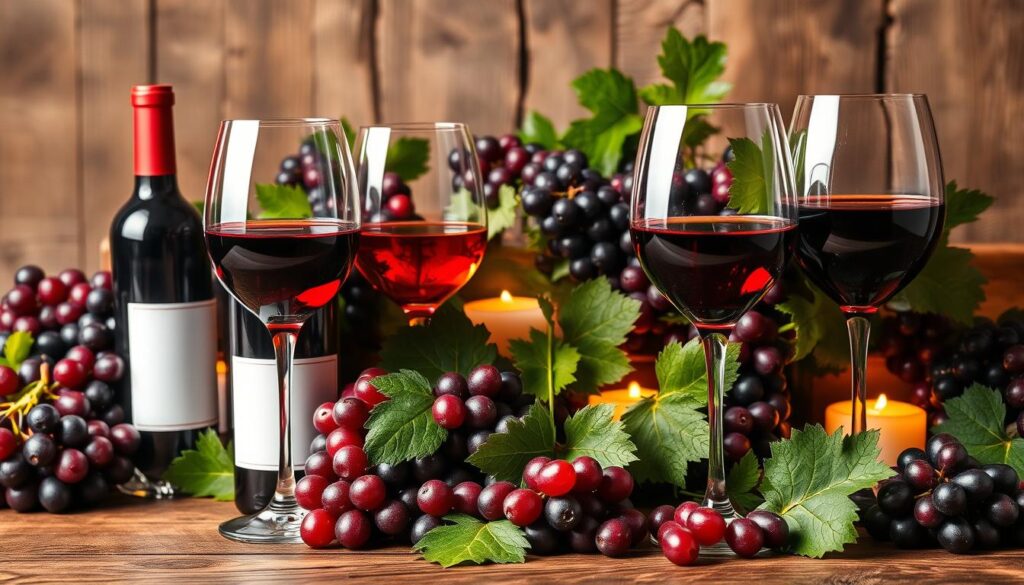
Choosing the Best Red Wines for Beginners
Starting your journey into the world of red wines can be both exciting and overwhelming. With 65% of beginners opting for red wines, it helps to focus on the best red wines that cater to your palate. Many new wine drinkers find the dry varieties challenging, as 85% report difficulty in enjoying them. Therefore, selecting smoother, fruit-forward options can elevate your experience significantly.
As you explore your wine choices, consider looking for red wines with low-to-medium tannins and juicy flavors, which are often easier to enjoy alongside food or on their own. According to wine experts, varietals like Grenache, Zinfandel, and Pinot Noir shine in this category. The approachable nature of Beaujolais, with its lighter style, makes it a standout recommended option for beginners.
Budget-friendly options abound, with many excellent selections available for under $20. This price point opens doors to discovering different producers, such as Marcel Lapierre, Charles Woodson, and Decoy. These wines not only provide quality but also allow you to connect different regions, like Italy, Spain, and Washington State, with unique flavors shaped by local terroir.
Many beginners find that attending wine tastings offers valuable experiences, helping to develop their palates. With 80% acknowledging the benefits of tastings, you can gain insights from sommeliers and fellow enthusiasts while sampling beginner-friendly wines designed to please.
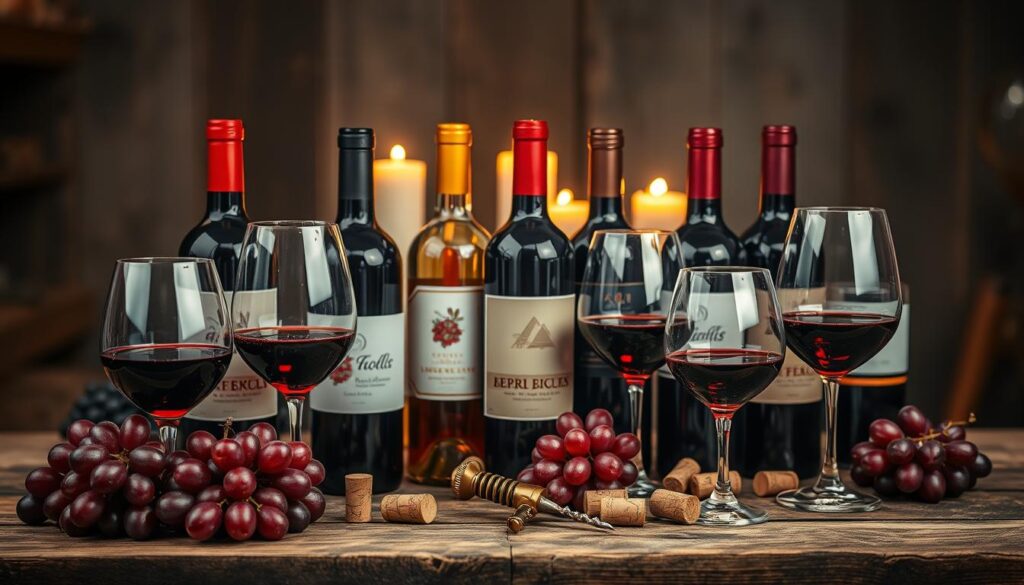
Keeping notes on your experiences can significantly enhance your journey. About 60% of wine enthusiasts use various methods like tracking apps or photos of wine labels to remember their tastings. This practice encourages further exploration and assists in defining your wine choices based on personal preferences.
The excitement of trying new red wines cannot be understated. With 70% of beginners emphasizing the importance of experimentation in discovering their tastes, each bottle presents an opportunity to find your favorites. Whether it’s a juicy Amorro with slow-cooked ribs or a chillable red for a summer evening, the world of red wine is ready for you to explore confidently.
Top Picks for Smooth Red Wines
Venturing into the world of red wines can be an exciting yet daunting experience. You may find yourself overwhelmed by the options available. This selection aims to guide you toward some of the best smooth red wines that offer delightful flavors without being overpowering. Whether you’re a novice or someone looking to refine your palate, these recommendations provide a gateway to enjoyable wine experiences.
Recommended Brands for Beginners
Several brands stand out for their smooth red wines, making them ideal choices for beginners. Consider exploring the following:
- Merlot – Renowned for its softness and fruit-forward characteristics, this varietal is typically approachable for new drinkers.
- Chilean Carménère – Known for its smooth texture and herbal notes, it offers an easy introductory experience.
- Australian Shiraz – With its bold fruit flavors and peppery spice, Shiraz provides a delightful complexity that remains smooth.
Price Points for Your Budget
Finding quality smooth red wines doesn’t have to break the bank. Below is a comparison of various wines along with their average price points:
| Wine Brand | Price Range | Rating |
|---|---|---|
| Merlot | $15 – $25 | 90 Points |
| Chilean Carménère | $10 – $20 | 92 Points |
| Australian Shiraz | $12 – $30 | 93 Points |
| Napa Valley Cabernet Sauvignon | $30 – $90 | 96 Points |
| Malbec | $15 – $25 | 90 Points |
These selections cover a range of wine pricing, ensuring that quality options remain accessible to any budget. You’ll find that these smooth red wines provide an exciting starting point for your journey into red wine appreciation.
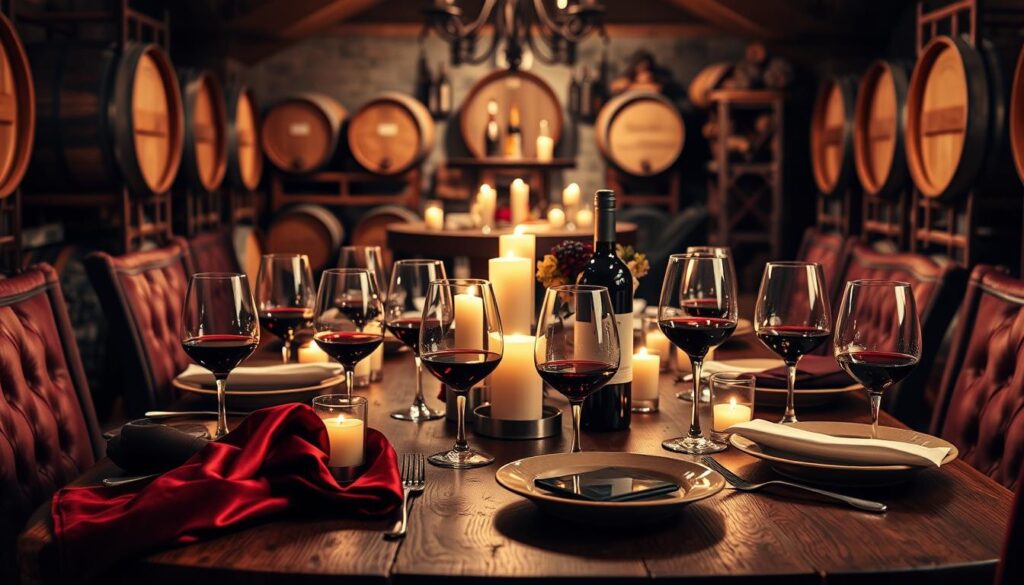
Exploring Red Wine Pairing Tips
Finding the right red wine pairing can elevate your dining experience significantly. Understanding some essential principles can assist you in enhancing wine flavor alongside your meals. Start by considering the wine’s acidity and sweetness. Ideally, your chosen red wine should be more acidic than the food, creating a delightful contrast that enhances the overall flavor.
Another aspect to focus on is flavor intensity. Match the wine’s intensity with that of the dish. For instance, Cabernet Sauvignon works wonderfully with bold meats like steak, where its deep flavors and structure complement the richness of the meat. Similarly, Merlot pairs beautifully with beef bourguignon, as its smoothness enhances the dish’s complexity.

Remember to explore the synergy between wine and sauces instead of solely focusing on the meat. More often than not, the sauce’s flavor can dictate the ideal red wine pairing. High bitterness in wines can benefit from the fat in dishes, offering a balanced experience.
- Identify dominant tastes in your food: salt, acid, sweet, bitter, fat, and spice.
- Bold red wines pair best with rich flavors, while lighter options work for delicate meals.
- Experiment with combinations like Shiraz with lamb chops or Pinot Noir with creamy Brie cheese.
- Consider getting creative by pairing flavorful wines like Zinfandel with grilled salmon.
Finally, don’t shy away from contrasting pairings. While red wines typically create congruent pairings, a well-chosen contrasting wine can surprise your palate and enhance your meal. By exploring these tips, you will be well on your way to mastering red wine pairing and creating memorable culinary experiences.
Reading and Understanding Red Wine Labels
Reading wine labels can be a rewarding experience, enhancing your understanding wine choices. With myriad details, wine labels serve as a guide to help you select the right bottle for any occasion. Familiarizing yourself with common wine terminology will make navigating these labels much easier.
Key elements you will often find on red wine labels include:
- Alcohol by Volume (ABV): On average, red wines have an ABV of around 13.5%. This information provides insight into the strength of the wine.
- Vintage: This represents the year the grapes were harvested, influencing flavor and quality.
- Varietal: Labels using variety names must derive at least 75% of their volume from the specified grape.
- Regional Information: Wines labeled with an American Viticultural Area (AVA) must utilize at least 85% of grapes from the designated area.
- Sulfites: If a wine contains more than 10 mg/liter of sulfites, this must be indicated on the label.
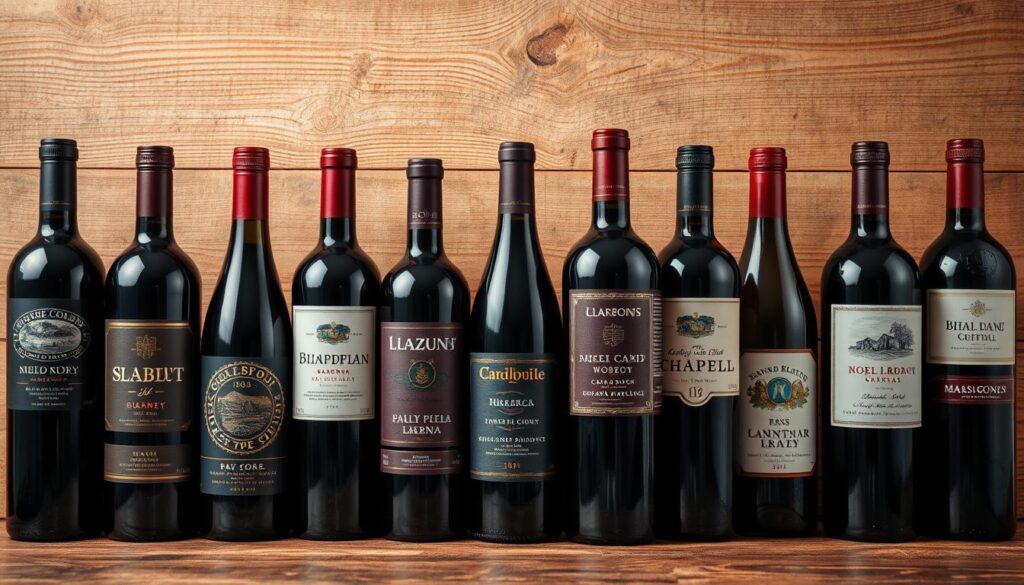
Wine labels may also feature terms that hint at sweetness levels or color, aiding your taste preferences. While reading, keep in mind:
- Red wines are usually dry, with sugar levels too low to be detected by professional tasters.
- The “Estate Bottled” designation ensures the winery grew and processed the grapes on its own land.
- Look for terms like “Produced and bottled by,” which can provide insights into the winemaking process.
Government regulations dictate the amount and type of information found on bottles. Understanding these basics will empower you to make informed selections, bringing more enjoyment to your wine journey.
Red Wine Tasting Notes: What to Look For
When diving into the world of red wine, honing your ability to identify aromas, flavors, and overall body can significantly enhance your tasting experience. As you swirl and sip, paying attention to these elements can lead to a deeper appreciation of each bottle’s unique profile.
Identifying Aromas and Flavors
Red wine offers a vast array of flavors that can transport you on a sensory journey. Here are some common aromas and flavor profiles to keep in mind:
- Fruits: Look for berry notes like strawberry, blackberry, and black cherry, as seen in wines like Zinfandel and Cabernet Sauvignon.
- Floral: Violets often characterize Cabernet Franc, adding delicate floral notes.
- Herbs and Spices: Many reds, particularly Grenache, can showcase spicy elements along with herby nuances.
- Earthy Characteristics: Varietals like Pinot Noir can include earthiness and minerality, enriching the tasting notes.
Assessing Body and Structure
Understanding the wine body is crucial for discerning a wine’s palate weight and overall presence. Here’s how to assess it:
| Wine Body | Alcohol By Volume (ABV) | Examples |
|---|---|---|
| Light-bodied | Below 12.5% | Gamay, Pinot Noir, Grenache |
| Medium-bodied | 12.5% – 13.5% | Sangiovese, Cabernet Franc, Merlot |
| Full-bodied | Above 13.5% | Malbec, Cabernet Sauvignon, Syrah |
Tannins significantly influence a wine’s structure. High-tannin wines, like Cabernet Sauvignon, often carry a bold presence, while lighter options typically feature softer tannins. Furthermore, acidity plays a vital role in balancing flavors and contributing to a wine’s aging potential. High acidity in wines can enhance freshness and provide a long-lasting finish.
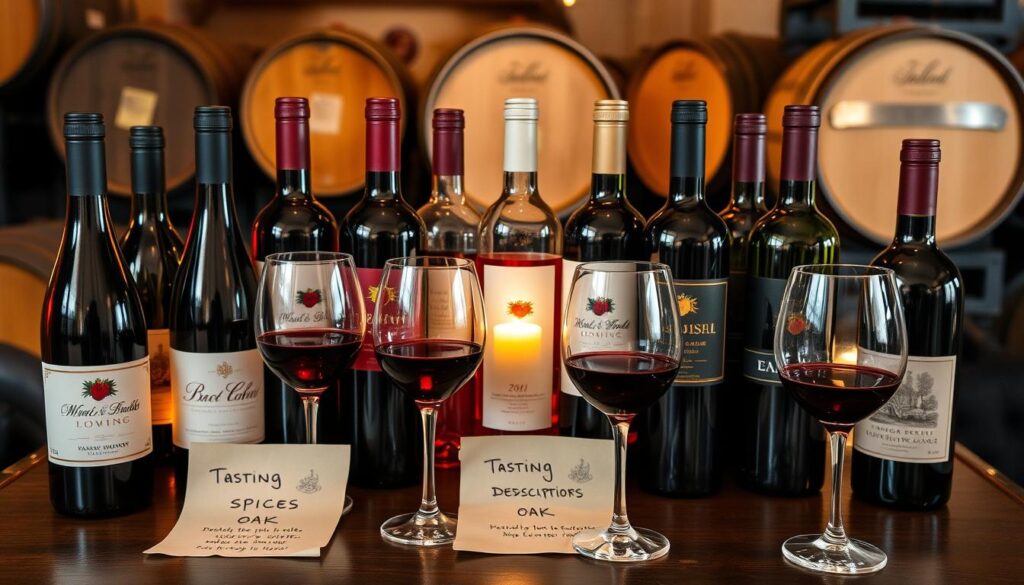
The Benefits of Drinking Red Wine
Red wine boasts a range of advantages that can contribute positively to your health when enjoyed responsibly. The presence of resveratrol in red wine has gained attention for its potential in promoting heart health. Scientific studies indicate that resveratrol may help prevent damage to blood vessels, lower LDL cholesterol levels, and reduce the risk of blood clots.
Health Benefits
Moderate consumption of red wine offers several notable health benefits:
- Heart Health: Drinking limited amounts of red wine is linked to a lower risk of heart disease, enhancing HDL cholesterol levels and improving blood vessel function.
- Antioxidant Properties: Resveratrol acts as an antioxidant, which may inhibit the formation of beta-amyloid proteins in the brain, associated with Alzheimer’s disease.
- Cancer Risk Reduction: Observational studies suggest that moderate red wine consumption might be connected to lower risks of certain cancers, including colon and ovarian cancer.
- Mood Improvement: Research indicates that red wine drinkers may experience lower levels of depression, showing benefits for mental wellness.
Enjoying Wine Moderately
To reap the benefits of red wine while avoiding the pitfalls of excessive consumption, moderation is key. The American Heart Association suggests up to one drink a day for women and up to two for men. A typical serving size of red wine is about 5 ounces, containing approximately 125 calories and key minerals.
Excessive drinking can lead to serious health issues, including an increased risk of heart failure, certain cancers, and high blood pressure. Being mindful of your drinking habits is essential, especially for individuals with certain conditions such as pregnancy, liver disease, or those taking incompatible medications.
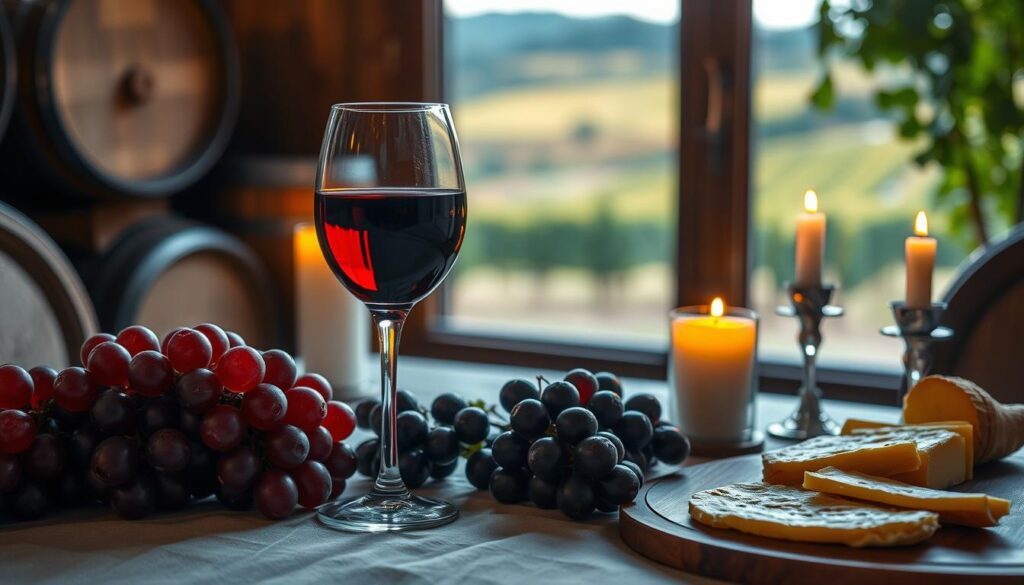
By incorporating red wine into a balanced lifestyle, while prioritizing moderation, you can enjoy the positive aspects of this beloved beverage along with its unique flavors and qualities.
| Benefit | Details |
|---|---|
| Heart Health | May lower LDL cholesterol and prevent blood clots. |
| Antioxidants | Contains resveratrol, which can inhibit Alzheimer’s-related proteins. |
| Cancer Risk | Potential reduction in risks for specific cancers. |
| Mood Enhancement | May lower rates of depression in adults. |
The Importance of Wine Aging
Aging plays a crucial role in developing the flavor profiles of various wines. As red wine ages, several influential factors come into play, including the type of grape used, storage conditions, and the time spent maturing. This process leads to a transformation that enhances the overall taste and aroma of the wine, showcasing the remarkable aging effects over time.
How Aging Affects Flavor
The aging process can significantly alter a wine’s characteristics. Key factors influencing this transformation include:
- Acidity: A vital component that protects and preserves the wine’s fruit signature. Wines with a good level of acidity tend to age gracefully.
- Tannins: The presence of tannins contributes to a wine’s structure and longevity. Varietals like Cabernet Sauvignon and Nebbiolo are particularly known for their tannic strength.
- Storage Conditions: Proper storage is essential, as wines kept in ideal environments can showcase their aging potential more effectively.
As noted in the world of red wine aging, some older vintages, such as a 1792 Madeira or a 1851 Gruaud-Larose magnum, stand the test of time. Winemakers have emphasized that exceptional aging often correlates with challenging vintages, where meticulous care is taken, resulting in wines that may surpass those from perfect years. This complexity enhances the sensory experience, inviting you to explore the depths that aging wines can offer.
Choosing Wines for Aging
Selecting the right wine for aging involves a careful assessment of varietals known for their longevity. Consider the following options when aiming to enrich your aging experience:
| Red Wine Varietal | Aging Characteristics | Optimal Aging Period |
|---|---|---|
| Cabernet Sauvignon | High acidity and tannin, deep color | 10+ years |
| Merlot | Soft and smoky; ages similarly to Cabernet | 6-10 years |
| Monastrell (Mourvèdre) | Rich, peppery flavors; requires aging | 10+ years |
| Tempranillo | One of the best for long-term aging | 10-15 years or more |
| Sangiovese | Spicy acidity mellowing into sweet notes | 5-10 years |
| Nebbiolo | High tannin wines; softening with age | 10+ years |
| Xinomavro | High tannin; emerging collectible from Greece | 10+ years |
| Aglianico | Requires time to develop savory flavors | 10 years or more |
Understanding these aging wines and their unique qualities allows you to make informed decisions. You can enhance your wine collection while enjoying the fascinating journey of flavors that develop over time.
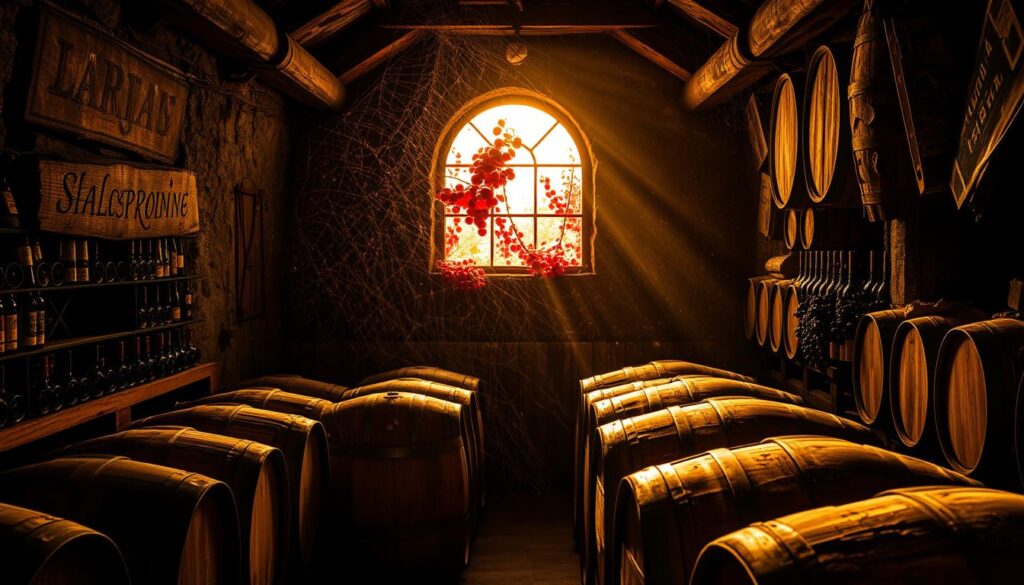
Navigating Popular Red Wines
Understanding the landscape of popular red wines can enhance your wine-buying experience. Various regional wines showcase unique characteristics that often reflect their geographical origins. Familiarizing yourself with these selections helps you appreciate what different regions contribute to red wine trends.
Top Choices from Different Regions
Here are some notable options from various wine-producing regions worldwide:
- California: Zinfandel remains a classic, once California’s star grape, now enjoyed coast to coast.
- France: Old vine Grenache thrives in Châteauneuf du Pape, producing rich, complex wines.
- Argentina: Malbec has risen in popularity, offering deep flavors and a vibrant profile.
- Tuscany, Italy: Sangiovese is the backbone of many Italian red wines, celebrated for its thrilling acidity and earthy notes.
- Oregon: Pinot Noir is often regarded as the prettiest and least predictable wine, charming drinkers with its delicate flavors.
Trends in Red Wine Preferences
Current red wine trends indicate shifts in consumer tastes, revealing rising varietals gaining traction. For instance, varietal Merlot gained a strong following in the ’90s but is now complemented by smaller, artisanal productions like Grenache and Pinot Noir. Syrah and Shiraz, though genetically identical, occupy different spaces in the market, catering to diverse palates.
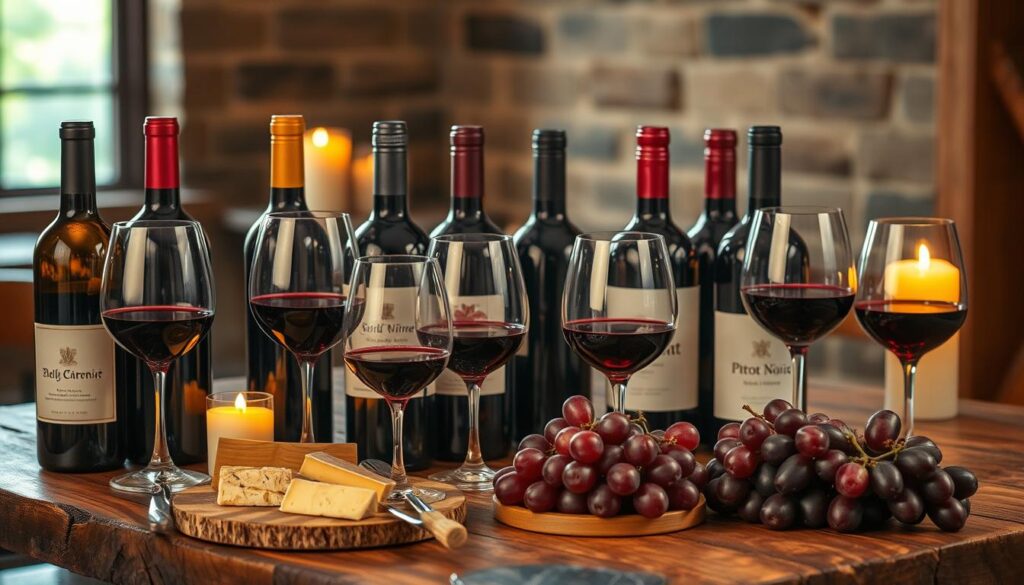
| Red Wine Varietal | Key Characteristics | Regions |
|---|---|---|
| Cabernet Sauvignon | Full-bodied, high tannins, deep red to purple color | Worldwide |
| Merlot | Medium body, low tannins, flavors of black cherry and plum | California, Bordeaux |
| Pinot Noir | Medium body, low tannins, dry taste profile | Burgundy, Oregon |
| Syrah/Shiraz | Full-bodied, dark fruit, spice | France, Australia |
| Zinfandel | Fuller body, flavors of cherry and strawberry | California |
Expert Tips for Red Wine Enthusiasts
Engaging with the world of red wines can deepen your appreciation and broaden your palate. Participating in wine tastings and joining wine clubs are excellent ways to enhance your knowledge. These experiences not only provide opportunities to sample different varieties but also allow you to interact with fellow enthusiasts and experts who can share valuable insights.
Participating in Wine Tastings
Wine tastings serve as a gateway for discovering new favorites. During these events, you can:
- Experience a range of varietals, from bold Cabernet Sauvignon to light Gamay.
- Learn to identify the intricate notes of fruits, spices, and earthy undertones in various wines.
- Understand the significance of tannins and acidity in creating a wine’s structure.
Embrace each tasting as a learning opportunity. The more you explore, the better you become at recognizing what styles and flavors resonate with you.
Joining Wine Clubs
Joining a wine club can greatly enhance your journey as a red wine enthusiast. Many clubs offer curated selections featuring unique and high-quality wines, often sourced from various regions. Benefits include:
- Access to exclusive wines unavailable in retail stores.
- Educational resources, including tasting notes and vineyard insights.
- Opportunities to purchase wines at discounted rates.
- Networking with fellow club members who share your passion.
By becoming part of a wine club, you gain more than just wine; you build a supportive community of like-minded individuals eager to share enthusiast tips. These interactions enrich your understanding and enjoyment of red wines as you embark on your discovery journey.
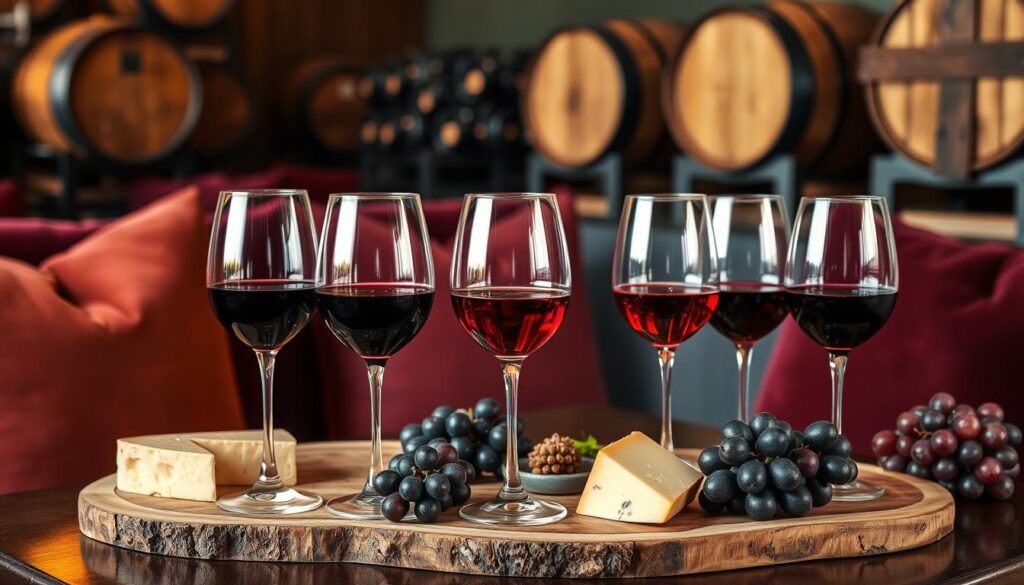
| Benefit | Wine Tastings | Wine Clubs |
|---|---|---|
| Varietal Exploration | Yes | Limited Selection |
| Community Engagement | Yes | Yes |
| Exclusive Offers | No | Yes |
| Educational Resources | Yes | Yes |
Overall, attending wine tastings and joining wine clubs will significantly enhance your experience and appreciation of red wines. With enthusiasm and engagement, you can navigate the rich landscape of flavors and styles that this beautiful beverage has to offer.
Conclusion
As we conclude this exploration into red wines, it’s essential to recognize that discovering the perfect red wines is not merely about selection, but a delightful wine journey that enhances your appreciation of this age-old beverage. Throughout the article, you have gained insights into the diverse varietals, intricacies of pairing, and the health benefits associated with moderate consumption of red wine.
Utilizing the knowledge gathered, you can confidently choose wines that complement your meals or elevate special occasions. From understanding the attributes of top varietals to recognizing the health benefits linked to red wines, this article serves as a foundation for your ongoing journey in the world of wine. As you continue your exploration, consider exploring the world of organic wines, which are produced without synthetic additives or pesticides. From crisp Sauvignon Blancs to rich Cabernet Sauvignons, the best organic wines offer a unique flavor profile and are a sustainable choice for both your palate and the planet.
Embracing this journey will not only expand your palate but also allow you to enjoy the social and health benefits that come with appreciating red wines responsibly. As you continue to explore, remember that every bottle tells a story—so pour, savor, and enjoy the delightful experiences ahead!
